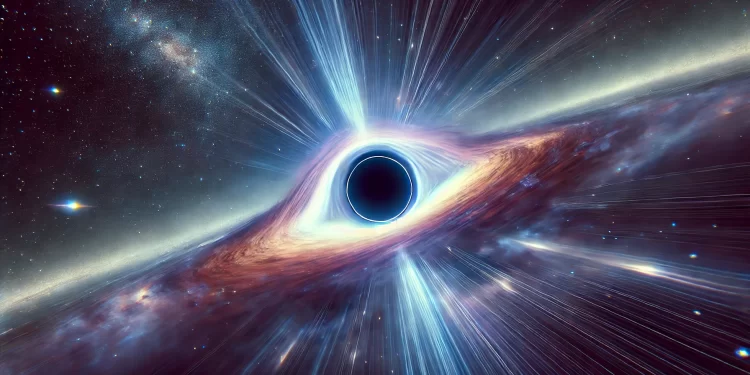New research suggests a radical possibility: black holes might not be the ultimate cosmic dead ends we once believed. Instead, under specific conditions, they could transition into their theoretical counterparts—white holes—potentially reversing time itself in the process.
One of the greatest mysteries of black holes is what happens to matter and information once they pass the event horizon. General relativity suggests they vanish into a singularity, a point of infinite density where known physics breaks down. But quantum mechanics, which governs the microscopic world, challenges this idea. Time, as we understand it, shouldn’t simply stop—it must evolve in some way.
Physicist Steffen Gielen from the University of Sheffield, alongside theoretical physicist Lucía Menéndez-Pidal from the Complutense University of Madrid, have introduced a concept that redefines time inside black holes. Their study proposes that dark energy, the mysterious force accelerating the Universe’s expansion, could serve as the true measure of time itself.
“We propose that time is measured by the dark energy that is everywhere in the Universe, and responsible for its current expansion. This is the pivotal new idea that allows us to grasp the phenomena occurring within a black hole,” Gielen explains.
Could Black Holes Flip Into White Holes?
Black holes are born from the deaths of massive stars, collapsing under their own gravity until they form an event horizon—a boundary beyond which nothing escapes. Conventional wisdom says anything that enters is lost forever.
However, the researchers suggest that deep inside the black hole, rather than encountering an inescapable singularity, extreme quantum fluctuations may take over. These fluctuations could act like a “bounce,” transforming the black hole into a white hole—an entity that, instead of pulling matter in, violently expels it out.
The Math Behind the Idea
The researchers developed their theory using planar black holes, a simplified mathematical model within a negatively curved anti-de Sitter space. While this does not directly describe real-world black holes, it allows physicists to apply quantum mechanics more effectively.
Under this model, instead of reaching a singularity, matter inside the black hole experiences intense quantum turbulence. This disturbance alters the nature of time, preventing it from freezing and enabling a transformation into a white hole.
Although the idea of black holes turning into white holes is intriguing, there is no observational evidence that such transitions actually happen. Scientists have long speculated about whether some unexplained cosmic phenomena—such as fast radio bursts—could be linked to white holes, but there’s no confirmation.
Moreover, while this study offers a new mathematical framework, it does not claim that white holes exist. Instead, it provides a fresh approach to understanding the extreme conditions inside black holes and how relativity and quantum mechanics might interact.
A Step Toward Unifying Physics?
One of the biggest challenges in physics is unifying general relativity, which governs large-scale cosmic structures, with quantum mechanics, which controls the microscopic world. Black holes are at the heart of this struggle.
If quantum fluctuations can prevent singularities and lead to a transformation into white holes, this might provide new clues about how these two opposing frameworks can coexist.
For now, the idea remains purely theoretical. But as physicists continue to push the boundaries of our understanding, we may one day find that black holes are not just cosmic prisons—but portals to something entirely new.











